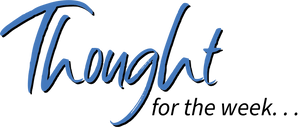This is the time of year when we begin to consider how the learning of our students has progressed. Despite the continuing disruptions and distractions this year has presented, most students will likely “weather the storm.” Their learning may not yet be where we would like and expect it to be, but their progress has them close enough to continue to benefit from on-pace instruction. There are gaps in their skills and there is content they still need to master, but time and continued support are likely to eventually place them back on track.
However, there are other students whose progress has continued to lag. They may be missing multiple key skills, have had inconsistent attendance, and seem not to be adequately responding to instruction. We may wonder whether keeping these students in the same grade for another year might be the answer.
On the surface, grade retention may seem like a reasonable option. The disruption of the past couple of years have led some politicians and policy makers to advocate for and in some cases implement directives that position grade retention as a solution to counter low academic achievement.
Yet, decades of research have documented that grade retention often causes at least as many problems as it solves. While students may spend additional time in the same grade, there is little evidence to show that repeating what was not successful in the past will necessarily be more successful in the future.
Too often, students view retention as a permanent punishment, regardless of the reasons for their not being successful. They are moved out of their friend group. Their placement with younger students is a constant reminder of their failure and source of social embarrassment. Retained students are subject to frequent reminding that they are not good learners. Further, they typically receive little recognition for the learning they built in the prior year and typically are required to accept instruction on skills and knowledge they have already gained.
Research studies also document that grade retention increases the likelihood that students will drop out of school before graduation. In fact, double retention virtually guarantees it. Internationally renowned research analyst, John Hattie, has found that grade retention is one of a small group of educational practices that has a negative impact on student achievement.
Requiring students to attend summer school as an alternative to grade retention is popular among many educators. The belief, again, is that more time will equal more learning. Yet, a summer school experience that repeats what happened during the year and is viewed by the student as punishment has not been shown to be an effective solution. If fact, summer school is often presented to students as a consequence for not having worked hard enough during the year.
So, what is a better answer? A great place to start is to identify students who are struggling early and not wait to intervene until most of the year has passed. Rarely is the performance of students who are considered for retention a surprise. Typically, multiple opportunities were available throughout the year to provide support and intervention that would make retention unnecessary.
Of course, we need to understand why a student is not progressing and design experiences to counter what is blocking progress. The problem may be missing skills that can be filled in. The absence of a strong adult relationship or feeling of belonging may be getting in the way of learning. Maybe a significant traumatic experience has left the student reluctant to take learning risks and lead them to hide rather than engage. Or, it may be an issue or cause that has its roots outside of school and additional resources need to be engaged. Regardless of the specific cause or combination of causes, early intervention avoids most, if not all, of the negative effects of retention.
Meanwhile, the challenge of what to do now, with a limited amount of time remaining in the school year, endures. A crucial first step still is to gain an understanding of what is standing in the way of learning. If the barrier is social-emotional, more instruction is not likely to help the situation. If multiple foundational academic skills are missing, instruction based on age or grade level expectations may make the situation even worse.
Once we understand the nature of the problem, we can arrange for services and scaffolding supports to address key barriers and help the student to build structures to overcome them, whether social, emotional, academic, or something more. We know that intensive tutoring can be effective when targeted and responsive to learning needs. If learning barriers are more substantial, intensive intervention by a learning specialists may be the answer. If learning is blocked by social or emotional factors, we can design experiences and create opportunities for connections to address needs and build skills to sustain the student going forward.
Once learning barriers and problems have been identified and an intervention plan is designed and implemented, we can develop short term and intermediate goals and progress markers with and for the student. We need to be certain that the intervention is working, and any needed adjustments are made in a timely manner.
Of course, these steps likely will require more time than remains in the current year. We need to arrange for consistent monitoring and ongoing support as the student transitions into a new year. We must be vigilant to ensure that support remains in place and progress is not lost.















